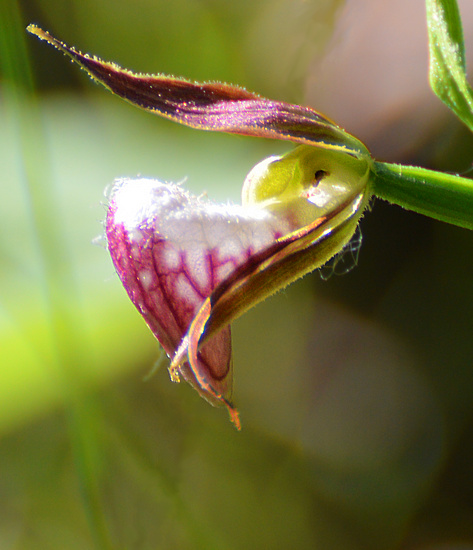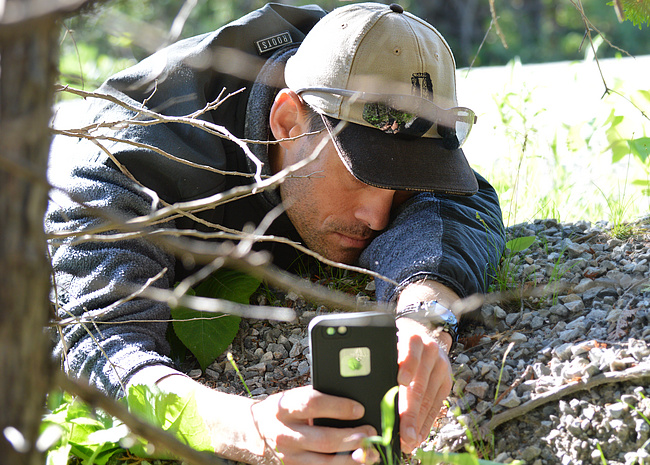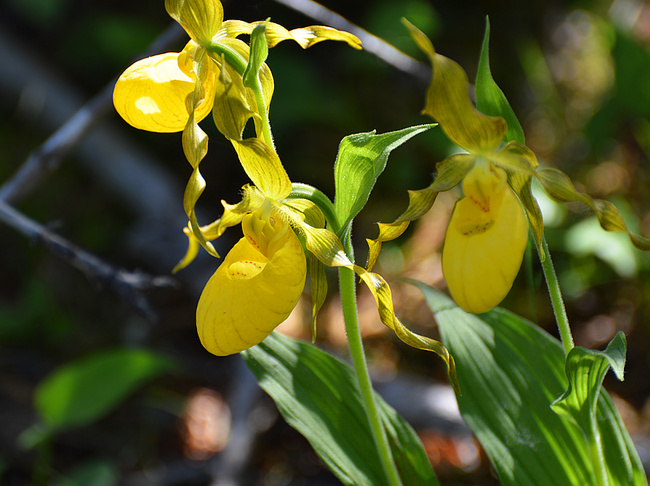
Birds and Orchids (part 1)
July 1st, 2017
On the 8th of June I joined Jon Ruddy and a small group of nature enthusiasts for his "Birds and Orchids" tour in Lanark County. One of the highlights was a trip to see a small Ram's Head Ladyslipper colony. You may recall mention of these rare orchids in one of my recent posts. "Small" is normally the only kind of Ram's Head colony you find, as they are rare wherever they occur. (A freak exception is a quarry in Arnprior boasting a colony of at least 150,000 of them. No one, including professional naturalists, understand why they are there.)
I had searched the Burnt Lands alvar (a known spot) for them on several occasions, but they eluded me. Now I learned why, or part of why, they are so elusive: Ram's Head Ladyslippers are tiny hidden beauties. Their "slippers" are about a centimeter and a half wide. At a glance they look like withered, past-their-prime flowers. Like nothing-much flowers. You can't even see their colors from a high angle. You have to get down low and close, and that's when the secret unfolds.


Jon photographing one of the tiny beauties

Yellow Ladyslippers grew in abundance, in clusters on the roadside. Fringed Polygala was likewise abundant, growing in the shadow of the cedars right beside the Ram's Heads. (This suggests to me that I should take a closer look at that spot in the Burnt Lands where I found Polygala. Hope I can re-find it!) This is a low-growing plant, but the polygala blossoms around the orchids almost seemed trampled, which suggested to me that this "secret" spot might not be so tightly guarded of a secret.
That's what my left brain thought, anyway. To my more romantic side, the carpet of delicate, deep pink blossoms completed the image of a fairy glade decked out for a party.

Postscript: Hiking in a different area the very next day, what should I find but two perfect Ram's Head Ladyslippers! The setting, based on what I'd learned the day before, was perfect--sunlight dappled by overhanging cedars, a floor of grass and conifer needles, Fringed Polygala and Yellow Ladyslippers growing nearby--but I'd never heard to look for them there. It was a stunning surprise.
July 1st, 2017
On the 8th of June I joined Jon Ruddy and a small group of nature enthusiasts for his "Birds and Orchids" tour in Lanark County. One of the highlights was a trip to see a small Ram's Head Ladyslipper colony. You may recall mention of these rare orchids in one of my recent posts. "Small" is normally the only kind of Ram's Head colony you find, as they are rare wherever they occur. (A freak exception is a quarry in Arnprior boasting a colony of at least 150,000 of them. No one, including professional naturalists, understand why they are there.)
I had searched the Burnt Lands alvar (a known spot) for them on several occasions, but they eluded me. Now I learned why, or part of why, they are so elusive: Ram's Head Ladyslippers are tiny hidden beauties. Their "slippers" are about a centimeter and a half wide. At a glance they look like withered, past-their-prime flowers. Like nothing-much flowers. You can't even see their colors from a high angle. You have to get down low and close, and that's when the secret unfolds.


Jon photographing one of the tiny beauties

Yellow Ladyslippers grew in abundance, in clusters on the roadside. Fringed Polygala was likewise abundant, growing in the shadow of the cedars right beside the Ram's Heads. (This suggests to me that I should take a closer look at that spot in the Burnt Lands where I found Polygala. Hope I can re-find it!) This is a low-growing plant, but the polygala blossoms around the orchids almost seemed trampled, which suggested to me that this "secret" spot might not be so tightly guarded of a secret.
That's what my left brain thought, anyway. To my more romantic side, the carpet of delicate, deep pink blossoms completed the image of a fairy glade decked out for a party.

Postscript: Hiking in a different area the very next day, what should I find but two perfect Ram's Head Ladyslippers! The setting, based on what I'd learned the day before, was perfect--sunlight dappled by overhanging cedars, a floor of grass and conifer needles, Fringed Polygala and Yellow Ladyslippers growing nearby--but I'd never heard to look for them there. It was a stunning surprise.
| ← | → |

Mike
July 3rd, 2017 at 9:20 am
Congrats on discovering more of the RHL's!